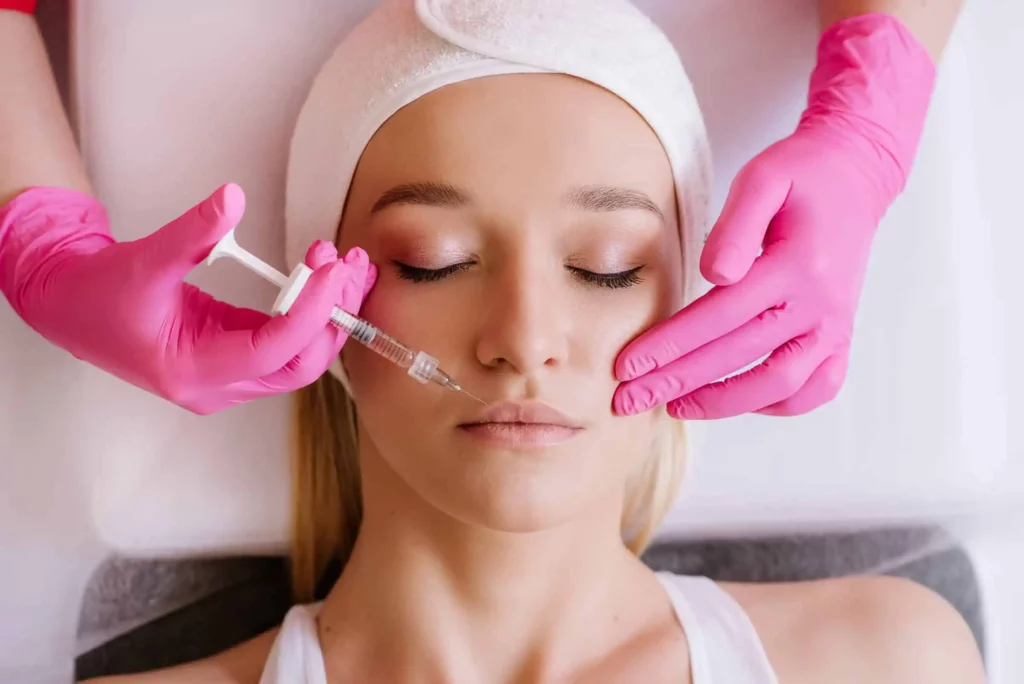Glutathione injections have gained popularity in recent years for their ability to improve skin complexion, reduce oxidative stress, and promote overall health. This powerful antioxidant, naturally produced in the body, plays a vital role in detoxifying harmful substances, neutralizing free radicals, and enhancing the immune system. With the increasing demand for aesthetic improvements and wellness therapies, many individuals are turning to glutathione injections to achieve their desired results. However, a common question remains: How many Glutathione Injections do You need to see Results?
In this article, we will explore the factors influencing the frequency and duration of glutathione injections, providing insights into how individuals can achieve long-term results.
How Many Glutathione Injections Are Needed for Lasting Results?
The number of glutathione injections required for lasting results depends on various factors, including individual goals, current health condition, and lifestyle habits. Typically, those seeking skin lightening, improved complexion, or anti-aging benefits might require a different frequency of injections compared to individuals using glutathione for general detoxification or wellness purposes.
On average, many individuals receive an initial series of glutathione injections, often administered once or twice a week. This phase, sometimes referred to as the "loading phase," typically lasts for about 10 to 15 sessions. After completing the initial round, a maintenance phase may follow, where injections are spaced out to once every two or four weeks. This maintenance schedule helps sustain the effects without overloading the body with excess glutathione.
It is essential to remember that results can vary from person to person. Some may notice visible changes in skin tone and overall well-being within just a few sessions, while others may require a more extended period of consistent treatment.
Factors That Influence the Number of Injections
1. Personal Goals
One of the most significant factors determining how many glutathione injections are needed is the individual's personal goals. For example, individuals pursuing skin lightening or a brighter complexion may require more frequent injections in the beginning to achieve noticeable changes. Skin lightening often requires a higher concentration of glutathione, and the treatment duration can extend from several weeks to months, depending on the initial skin tone and desired outcome.
On the other hand, those seeking the antioxidant benefits of glutathione, such as reducing oxidative stress or supporting liver health, may require fewer sessions, as their focus is more on maintaining internal wellness rather than achieving visible aesthetic changes.
2. Skin Type and Pigmentation
The individual’s natural skin tone and type significantly affect how quickly results appear and how many injections are needed. People with darker skin tones may need more sessions to see the same lightening results compared to those with lighter complexions. This is because melanin production varies across different skin types, and glutathione works by inhibiting melanin production over time. Therefore, individuals with higher melanin levels may need more injections to achieve their desired level of skin lightening.
Skin types also play a role. For example, those with sensitive skin may need to space out their injections more to avoid irritation, while others with more resilient skin might tolerate frequent doses better.
3. Metabolism and Lifestyle
An individual’s metabolism and lifestyle choices can also impact how effective glutathione injections are and how long results last. Metabolism plays a critical role in how quickly the body processes and utilizes glutathione. Those with faster metabolic rates may notice that the effects of injections wear off more quickly, meaning they might need more frequent sessions to maintain the desired results.
Additionally, lifestyle factors such as diet, exercise, alcohol consumption, and smoking can either enhance or diminish the effects of glutathione. For example, those with a nutrient-rich diet, regular exercise routine, and healthy habits are more likely to maintain the benefits of glutathione for a longer period, reducing the need for frequent injections.
4. Health Conditions
Underlying health conditions can also influence how many glutathione injections are necessary. Individuals with chronic conditions that cause oxidative stress or inflammation, such as autoimmune disorders, may benefit from a higher frequency of injections. In these cases, glutathione is not only working to improve aesthetic aspects like skin lightening but also helping to combat the oxidative stress caused by the condition.
Conversely, those in good health with few or no underlying conditions may experience more sustained results with fewer injections, as their body may already be producing sufficient levels of glutathione naturally.
5. Injection Dosage and Formulation
The dosage and formulation of glutathione injections can also affect the number of sessions required for lasting results. Higher doses of glutathione may produce faster and more noticeable results, but they should be administered under medical supervision to avoid potential side effects.
In addition, some individuals may receive glutathione injections combined with other complementary treatments, such as vitamin C or other antioxidants. These combinations can enhance the effects of glutathione and potentially reduce the number of sessions needed to achieve lasting results.
How Long Do Glutathione Injection Results Last?
The longevity of results from glutathione injections depends on several factors, including the frequency of injections, individual metabolism, and lifestyle choices. For many people, the results of a full series of glutathione injections can last anywhere from a few months to over a year, especially if they follow a proper maintenance routine.
To sustain the results, it is often recommended that individuals undergo maintenance injections every few weeks or months after completing the initial series. Additionally, adopting healthy lifestyle habits, such as consuming a balanced diet rich in antioxidants, avoiding excessive sun exposure, and limiting alcohol and tobacco use, can extend the effects of glutathione.
Conclusion
The number of glutathione injections required for lasting results varies greatly from person to person. Factors such as personal goals, skin type, metabolism, and underlying health conditions play crucial roles in determining how many sessions are needed. While some individuals may see results after just a few treatments, others may require more extended and consistent use to achieve their desired outcomes.






Comments